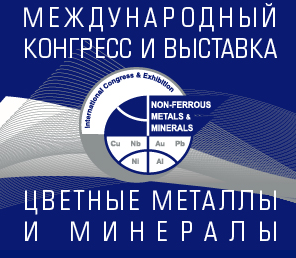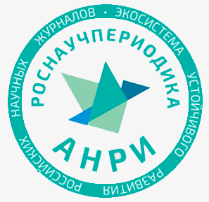ИСПОЛЬЗОВАНИЕ ПРОДУКТОВ ХИМИЧЕСКОЙ ПЕРЕРАБОТКИ ПОЛИЭТИЛЕНТЕРЕФТАЛАТА ДЛЯ МОДИФИКАЦИИ БИТУМОВ
Аннотация
Полиэтилентерефталат (ПЭТФ) – это один из наиболее широко используемых пластиков в мире, для которого успешно освоены методы механической и химической повторной переработки. В последние годы продукты химической переработки ПЭТФ привлекают внимание в качестве потенциальных добавок в строительные материалы, включая асфальтовые смеси и бетон. Целью данного исследования является разработка подхода к вторичной химической переработке отходов ПЭТФ для получения продуктов с добавленной стоимостью, которые могут быть использованы для модификации битумов. Для достижения этой цели отходы ПЭТФ подвергали реакции аминолиза с последующим получением олигоэфирамидов, которые были охарактеризованы методами ИК-спектроскопии и вискозиметрии. Полученные продукты использовали для модификации битума марки БНД 60/90. Результаты испытаний модифицированных битумов (по ГОСТ 33137-2014, ГОСТ 11506-73, ГОСТ 18180-72, ГОСТ 12801-98) показали, что добавление олигоэфирамидов, может повысить устойчивость к образованию колеи, расширить температурный интервал эксплуатации и адгезию битума к минеральному наполнителю. Установлено, что введение олигоэфирамидов не вызывает существенного возрастания динамической вязкости битума (при температуре 135 °С), что позволит избежать технологических сложностей в процессе перекачки битумов; обеспечивает стойкость битума к тепловому старению на уровне не ниже исходного. Показано, что с увеличением молекулярной массы олигоэфирамида и его дозировок сдвиговая устойчивость и адгезия битума к минеральному наполнителю увеличиваются, при этом наилучшее сцепление наблюдается с мрамором. Таким образом, рациональное использование олигоэфирамидов, полученных из отходов ПЭТФ, может являться перспективным направлением решения экологических проблем загрязнения и открывает возможность для получения продуктов с высокой добавленной стоимостью.
Для цитирования:
Широкова Е.С., Вохмянин М.А. Использование продуктов химической переработки полиэтилентерефталата для модификации битумов. Изв. вузов. Химия и хим. технология. 2025. Т. 68. Вып. 1. С. 93-100. DOI: 10.6060/ivkkt.20256801.7137.
Литература
Read J., Whiteoak D. The Shell Bitumen Handbook. London: Thomas Telford Ltd, 2003. 463 p.
Schaur A., Unterberger S.H., Lackner R. Impact of molecular structure of PP on thermo-rheological proper-ties of polymermodified bitumen. Constr. Build. Mater. 2021. V. 287. 122981. DOI: 10.1016/j.conbuildmat.2021.122981.
Mazumder M., Siddique A., Ahmed R., Lee S.-J., Lee M.-S. Rheological and Morphological Characterization of Styrene-Isoprene-Styrene (SIS) Modified Asphalt Binder. Adv. Civ. Eng. 2020. V. 2020. 8877371. DOI: 10.1155/2020/8877371.
Tang N., Huang W., Hao G. Effect of aging on morphology, rheology, and chemical properties of highly polymer modified asphalt binders. Constr. Build. Mater. 2021. V. 281. 122595. DOI: 10.1016/j.conbuildmat.2021.122595.
Zhang F., Hu C., Zhang Y. Research for SEBS/PPA compound-modified asphalt. J. Appl. Polym. Sci. 2018. V. 135. N 14. 46085. DOI: 10.1002/app.46085.
Attaelmanan M., Feng Ch.P., Al-Hadidy A.I. Laboratory evaluation of HMA with high density polyethylene as a modifier. Constr. Build. Mater. 2011. V. 25. N 5. P. 2764-2770. DOI: 10.1016/j.conbuildmat.2010.12.037.
Stepanovich Yu.A., Shrubok A.O. Influence of polyethylene additives on the structure and properties SBS-modified bitumens. Tr. BGTU. Ser. 2, Khim. Tekhnol. Biotekhnol., Geoekologiya. 2022. N 2 (259). P. 49-55 (in Russian). DOI: 10.52065/2520-2669-2022-259-2-49-55.
Yan K., Hong Z., You L., Ou J., Miljković M. Influence of ethylenevinyl acetate on the performance improve-ments of low-density polyethylene-modified bitumen. J. Cleaner Prod. 2021. V. 278. 123865. DOI: 10.1016/j.jclepro.2020.123865.
Gokhman L.M., Gurari E.M., Davydova A.R., Davydova K.I. Highways. Polymer-bitumen binders based on SBS for road construction: a review. I. 4-2002. Bib standard. doc. (in Russian). URL: https://files.stroyinf.ru/Data1/56/56236/?ysclid=ls07eim 2o5917686385.
Guvalov A.A., Mamedov A.D., Kakhramanov N.T. Effect of modificators on the properties of bitumen and asphalt concrete. ChemChemTech [Izv. Vyssh. Uchebn. Zaved. Khim. Khim. Tekhnol.]. 2021. V. 64. N 10. P. 98-104 (in Russian). DOI: 10.6060/ivkkt.20216410.6383.
Geyer R., Jambeck J.R., Law K.L. Production, use, and fate of all plastics ever made. Sci. Adv. 2017. V. 3. N 7. DOI: 10.1126/sciadv.1700782.
Rouch D.A. Plastic future: How to reduce the increasing environmental footprint of plastic packaging. 2024. Working Paper N 11. Clarendon Policy & Strategy Group, Melbourne, Australia.
Kuzin I.A., Vasilev A.N., Menshikov V.V. Analysis of the market of secondary polymeric raw materials. Usp.Khim. Khim. Tekhnol. V. 31. N 15. P. 54-55 (in Rus-sian).
Jagadeesh P., Rangappa S.M., Siengchin S., Puttegowda M., Thiagamani S.M.K., Rajeshkumar G., Kumar M.H., Oladijo O.P., Fiore V., Moure Cuadrado M.M. Sustainable recycling technologies for thermoplastic polymers and their composites: A review of the state of the art. Polym. Compos. 2022. V. 43. N 9. P. 5831-5862. DOI: 10.1002/pc.27000.
Oladele I.O., Okoro C.J., Taiwo A.S., Onuh L.N., Agbeboh N.I., Balogun O.P., Olubambi P.A., Lephuthing S.S. Modern trends in recycling waste thermoplastics and their prospective applications: a review. J. Compos. Sci. 2023. V. 7. N 5. 198. DOI: 10.3390/jcs7050198.
Ma Y., Zhou H., Xi J., Polaczyk P., Xiao R., Zhang M., Baoshan H. The utilization of waste plastics in asphalt pavements: A review. Cleaner Mater. 2021. V. 2. 100031. DOI: 10.1016/j.clema.2021.100031.
You L., Long Z., You Z., Ge D., Yang X., Xu F., Hashemi M., Diab A. Review of recycling waste plastics in asphalt paving materials. J. Traffic Transp. Eng. (Eng. ed). 2022. V. 9. N 5. P. 742-764. DOI: 10.1016/j.jtte.2022.07.002.
Okhotnikova E.S., Ganeeva Yu.M., Frolov I.N., Firsin A.A., Timirgalieva A.Kh. The use of secondary polyole-fins for the modification of bitumen. Proceedings. Khim. Khim. Tekhnol. XXI veke : XIX International conference of students and young scientists named after Professor L.P. Kulev, 21-24 May 2018. Tomsk: TPU, 2018. P. 453-454 (in Russian).
Korneichuk N.S., Lesquin A.I., Rakhimova N.А. Polymer-bitumen binder on the basis of recycled polypropyl-ene for production of asphalt mixes. Inzhener. Vestn. Dona. 2017. N 2 (45). (in Russian). URL: ivdon.ru/ru/magazine/archive/n2y2017/4240.
Lesik E.I., Kositcyna S.S., Safin V.A., Buryukin F.A. Bitumens modified with polyolefins and products of their thermolysis. Yuzno-Sibir. Nauch. Vestn. 2023. N 2 (48). P. 139-145 (in Russian). DOI: 10.25699/SSSB.2023.48.2.015.
Glagoleva O.F., Inozemtsev K.A, Belokon N.Y., Mar-kova I.V. Investigation of the aging of bitumen mixtures with atactic polypropylene. Proceedings of the scientific and practical conference dedicated to the 50th anniver-sary of the formation of the bitumen laboratory of Gubkin Russian State University of Oil and Gas. Moscow. 2013. P. 44-46 (in Russian).
Gokhman L.M., Shemonaeva D.S., Stepanyan I.V., Titova E.N. The use of atactic polypropylene to improve the properties of bitumen and asphalt concrete. Avtomob. Dorogi. 1990. N 8. P. 11-13 (in Russian).
Mashaan N.S., Chegenizadeh A., Nikraz H., Rezag-holilou A. Investigating the engineering properties of as-phalt binder modified with waste plastic polymer. Ain Shams Eng. J. 2021. V. 12. N 2. P. 1569-1574. DOI: 10.1016/j.asej.2020.08.035.
Mashaan N.S., Chegenizadeh A., Nikraz H. Performance of PET and nano-silica modified stone mastic as-phalt mixtures. Case Stud. Constr. Mater. 2022. V. 16. e01044. DOI: 10.1016/j.cscm.2022.e01044.
Saleh H.A., Al Allam M.A. Evaluation of the Mechanical Properties of Asphalt Mixture Modified with RPET. Uni-vers. J. Eng. Sci. 2019. V. 7. N 2. P. 27-31. DOI: 10.13189/ujes.2019.070201.
Usman I.U., Kunlin M. Influence of Polyethylene Terephthalate (PET) utilization on the engineering properties of asphalt mixtures: A review. Constr. Build. Mater. 2024. V. 411. 134439. DOI: 10.1016/j.conbuildmat.2023.134439.
Wypych G. Handbook of polymers. Toronto: ChemTec Publ. 2012. 680 p.
Agha N., Hussain A., Ali A.S., Qiu Y. Performance evaluation of Hot Mix Asphalt (HMA) containing Poly-ethylene Terephthalate (PET) using wet and dry mixing techniques. Polymers. 2023. V. 15. N 5. 1211. DOI: 10.3390/polym15051211.
Ahmad M.S., Ahmad S.A. The impact of polyethylene terephthalate waste on different bituminous designs. J. Eng. Appl. Sci. 2022. V. 69. 53. DOI: 10.1186/s44147-022-00104-5.
Choudhary R., Kumar A., Murkute K. Properties of waste polyethylene terephthalate (PET) modified asphalt mixes: dependence on PET size, PET content, and mixing process. Period. Polytech. Civ. Eng. 2018. V. 62. N 3. P. 685-693. DOI: 10.3311/PPci.10797.
Mersha D.A., Gesese T.N., Sendekie Z.B., Admase A.T., Bezie A.J. Operating conditions, products and sus-tainable recycling routes of aminolysis of polyethylene terephthalate (PET) – a review. Polym. Bull. 2024. V. 81. P. 11563-11579. DOI: 10.1007/s00289-024-05259-0.
Teotia M., Tarannum N., Soni R.K. Depolymerization of PET waste to potentially applicable aromatic amides: Their characterization and DFT study. J. Appl. Polym. Sci. 2017. V. 134. Is. 31. 45153. DOI:10.1002/app.45153.
Conroy S., Zhang X. Theoretical insights into chemical recycling of polyethylene terephthalate (PET). Polym. Degrad. Stab. 2024. V. 233. 110729. DOI: 10.1016/j.polymdegradstab.2024.110729.
Li R., Leng Z., Yang J., Lu G., Huang M., Lan J., Zhang H., Bai Y., Dong Z. Innovative application of waste polyethylene terephthalate (PET) derived additive as an antistripping agent for asphalt mixture: Experi-mental investigation and molecular dynamics simulation. Fuel. 2021. V. 300. 121015. DOI: 10.1016/j.fuel.2021.121015.
Xu X., Chen G., Wu Q., Leng Z., Chen X., Zhai Y., Tu Y., Peng C. Chemical upcycling of waste PET into sus-tainable asphalt pavement containing recycled concrete aggregates: Insight into moisture-induced damage. Constr. Build. Mater. 2022. V. 360. 129632. DOI: 10.1016/j.conbuildmat.2022.129632.
Baradaran S., Rahimi J., Ameri M., Maleki A. Mechanical performance of asphalt mixture containing eco-friendly additive by recycling PET. Case Stud. Constr. Mater. 2024. V. 20. e02740. DOI: 10.1016/j.cscm.2023.e02740.
Vesnin R.L., Alalykin A.A., Vokhmyanin M.A. Polyethylene terephthalate waste recycling technology to produce terephthalic acid amide. ChemChemTech [Izv. Vyssh. Uchebn. Zaved. Khim. Khim. Tekhnol.]. 2020. V. 63. N 2. P. 99-104 (in Russian). DOI: 10.6060/ivkkt.20206302.6055.
Ivkin A.S., Vasiliev V.V. Patterns of interaction of bitumen with mineral materials. Abstracts. High-tech func-tional materials technologies: VI International Scientific and Technical Conference. 09-11 October 2019. SPb.: GIKIT. 2019. P. 50-51 (in Russian).
Leoné N., Roy M., Saidi S., de Kort G., Hermida-Merino D., Wilsens C.H.R.M. Improving processing, crystallization, and performance of polyl-lactide with an amide-based organic compound as both plasticizer and nucleating agent. ACS Omega. 2019. V. 4. N 6. P. 10376-10387. DOI: 10.1021/acsomega.9b00848.
Altaf S., Teotia M., Soni R.K. Development of RP-HPLC–UV Technique for “N, N’-Disubstituted Tereph-thalamides”, the Depolymerized End Products of Polyethylene Terephthalate Waste. Chromatographia. 2024. V. 87. N 4. P. 215-226. DOI: 10.1007/s10337-024-04321-3.
Pretsch E., Bühlmann P., Affolter C. Structure determination of organic compounds. Tables of spectral data. М.: Mir, BINOM. Laboratoriya znaniy. 2006. 439 p. (in Russian).



















